Whenever you look at a house plan or see a mock-up of a new building, an architectural design service has a hand in it. Today’s market is saturated with stunning new visualizations that capture hyper-realistic versions of rendered scenes. A quick Google search shows countless examples of photorealistic renderings, CGI effects, and digital visualizations that trick the mind’s eye into believing it’s real.
Modern film is riddled with compelling digital rendering, from movies like Ex Machina to The Avengers that show dramatic landscapes, new buildings, and skylines in New York City. You are surrounded by incredible pieces of artwork in the form of 3D rendering, and this technology is significantly impacting the architectural and design industries.
These are all different types of rendering, three-dimensional or otherwise. In the marketplace of modernity, visualization has caught up with the imagination and allowed 3D rendering freelancers to create renderings that can truly represent what the client wants and even offer things that are impossible to develop naturally.
The proliferation of rendering options and types of designs that can be created has driven technology to create better, faster, and more complex rendering forms. One of the significant benefits of this acceleration in technology is that you can offer stunning views that would be impossible without the aid of a computer or some form of technology.
The military recently unveiled a new surveillance camera that can take photos in billions of pixels. China unveiled an image with 195 gigapixels, which still holds the record for the highest-resolution photo.
With this type of imaging, you can apparently zoom in from the level of a skyline image and eventually get to the level of clarity that you can make out individual facial expressions on the streets below. That is incredible and slightly terrifying, but it doesn’t even compare to what you can accomplish with sophisticated rendering software.
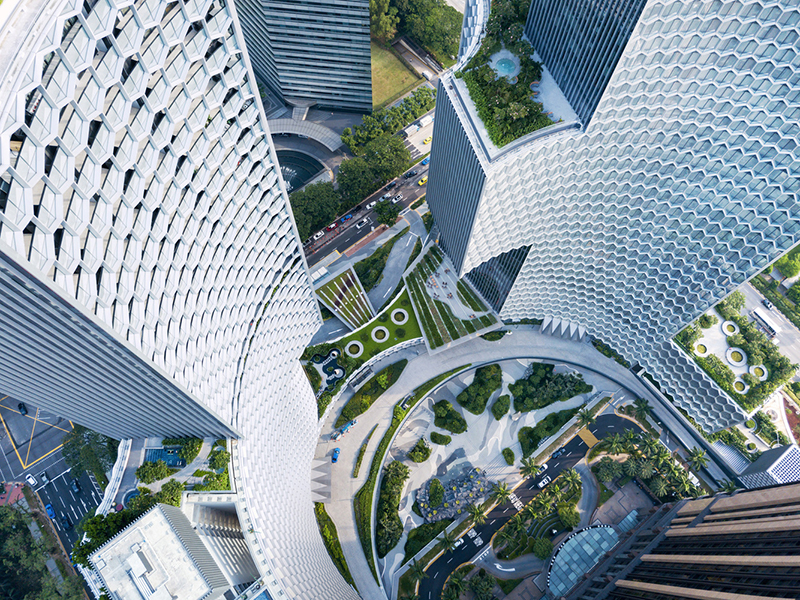
The minutiae that can be created and manipulated with this software will make 195 gigapixels seem quaint. These architectural designs can illustrate entire cities in exquisite detail so that you can zoom in and count the hairs of a dog on the streets from a skyline view. Now, whether or not you’d want to is another question.
But the software has become robust enough to challenge the perception of reality in images. In fact, another article on this blog discusses 3D rendering in pieces of modern artwork and a current challenge to create pieces that make people believe they are actual photographs instead of software fabrications. The results are, to say the least, stunning.
What is more impressive about this type of software and the firms that utilize it daily is the flexibility and practicality of it all. For one, it is possible to manipulate, rearrange, and recreate everything you do in these renderings. Designing an entire house from scratch with that level of clarity may take some time, but duplicating it and changing patterns and colors is almost instantaneous.
Many companies are transitioning to requiring a full sketch-up before construction to use it for architectural plotting and as a piece of comparison as the project goes along. Not only is it a pretty picture, but it is also a blueprint. Because everything is performed on a computer, the dimensions are logged and registered automatically. It can be broken down into its essentials to give a clear map forward so you can create your final product.
To help you fully understand the capabilities that architectural design companies and CAD freelancers offer, let’s look at some of the many available types of architectural rendering. This is not an exhaustive list, but it should give a picture of some of the impressive features a rendering can offer.
Types of 3D Rendering
1. 3D Exterior Rendering Services
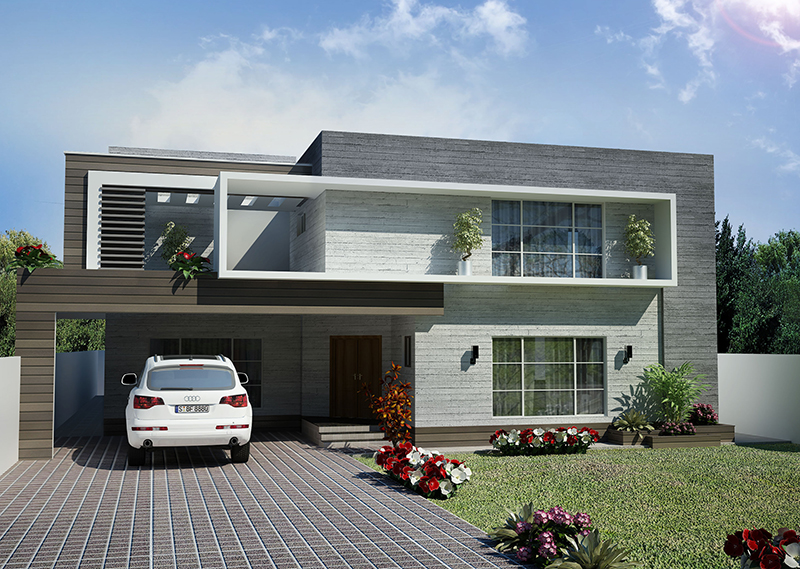
The first type of 3D rendering we’ll examine is 3D exterior rendering. This form of visualization is one of the most noticeable and familiar, accomplishing many things. 3D exterior rendering allows architectural design services, CAD freelancers, and the like to design a structure’s walls, textures, foundational elements, and roofing.
Essentially, if it is on the exterior of a building, 3D exterior rendering takes care of it. Many people have seen and are impressed with interior design and 3D panoramas of rooms, but they may not think about just how crucial and impactful exterior 3D modeling can be.
Not only does it help clients see a finished product and imagine the curb appeal of a particular building or structure, but it also gives the designers the ability to address and plan for both the materials they will need to incorporate and what obstacles they may encounter in the construction project. 3D exterior rendering can help ensure that a project is safe and functional after completing the construction portion.
3D exterior rendering is used most often by architects and designers to map out a dynamic schematic of the outside of a building. Doing this gives the client an accurate view of the building’s walls, foundations, roofing, and any other exterior features.
Moreover, exterior rendering of this type can incorporate additional features to visualize the space accurately. Many times, people will choose to include fences, parking lots, or other surface features so they can genuinely gauge the overall aesthetic appearance of the outside of the building. However, even more, exciting things can be incorporated, particularly useful if they are adjustable or customizable according to the client.
With this rendering, you can test out different siding materials and paint colors or visualize the best type of landscaping for your house. Maybe you have a design for an apartment complex—the overall exterior schematic can help you plan and locate the best place for a pool or dog park.
Maybe you have to work around specific landmarks or geological features, and you’d like to see the best way to orient your house to preserve the natural aspects and maximize the property’s space and appeal. An exterior rendering can give that to you.
3D exterior rendering is also extremely useful in guidelines and regulations. There are civil details and regulations to which a structure must adhere to in each construction project. By designing the outside of the building on a computer screen, you can adjust for each of the necessary codes before building and visualize how they will impact your project. For instance, there are many restrictions on proximity to fire hydrants for structures.
A design can help you position the property appropriately to account for those details. Additionally, you may encounter restrictions on some structural aspects of the building. By visualizing it with a render first, you can take these factors into consideration well before you actually break ground and have to begin redoing your project.
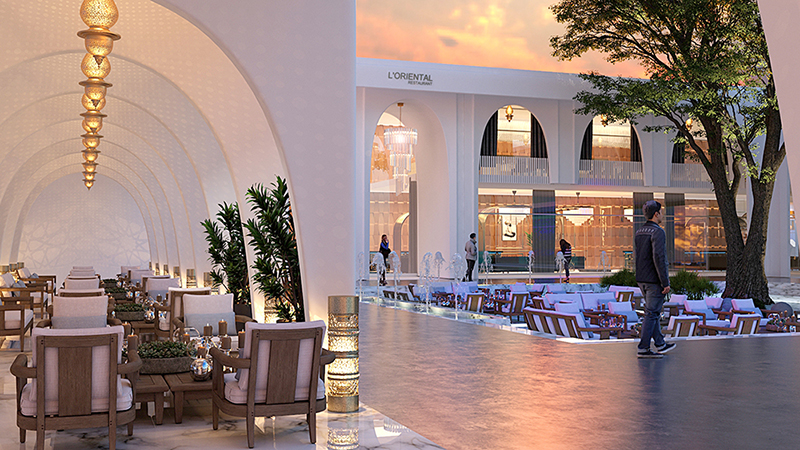
Exterior rendering can bring realism and a new dimension to your residential or commercial architectural design. Numerous software packages offer different capabilities, but there are several things you must be aware of and be prepared to discuss with your architect or engineer before starting your project.
These will keep your project from going off the rails and help you ensure you have accounted for everything. These factors can impact pricing and timelines, so you’ll have to find the correct middle ground to get what you need to be designed for the project on time and under budget—especially because these 3D renderings can be quite a comprehensive undertaking.
First, you must account for your environment with the rendering plan. As we discussed earlier, you can incorporate much of the environment and surroundings into your design—in fact, you can incorporate absolutely as much as you want.
However, this will significantly impact the work needed for the rendering. Trees, landscaping, and even the sky require additional effort and time, so incorporating them will make a difference in how much time is required and the project costs. Establishing the most necessary environmental elements before beginning the design may be beneficial.
Second, don’t go too far with the styling. There is a balance between knowing what the exterior should look like and going into too much detail. The requirements from local governments can be understood with relatively simple schematics (such as distance from fire hydrants, external color or texture, and similar details).
The more detail you choose to incorporate into your design, the more aesthetically pleasing your project will be, for sure. However, you must also remember the time and financial constraints. The most important thing is getting the job done, not detailing the number of grooves in every shingle on the house’s roof. This will waste your time and effort, not to mention money—so focus on what’s truly important in the project.
Finally, you need to be prepared to answer what views you need for the design. In architecture and design, you will likely have already encountered the required views and know what’s needed, but be sure to have that prepared when you speak with the designer so they can give you only what’s necessary and nothing too excessive.
Perhaps you want a bird’s eye view and a straight-on perspective. Telling these details to your designer will save them the time and expense of designing a view from behind or looking up from below, for example. The more direction you give the designer prior to starting on this project, the easier your life will be.
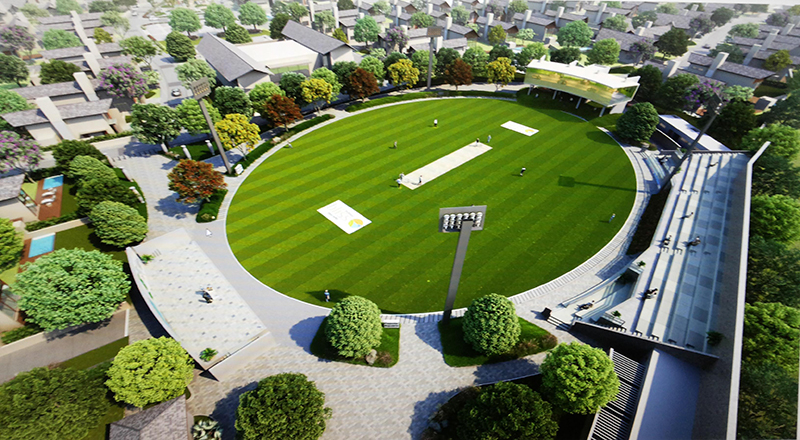
The next type of rendering we will discuss is 3D aerial rendering, which Cad Crowd has many offerings for. There are options for aerial rendering in energy and utilities, manufacturing, transportation, architecture, aerospace, marketing, tech, media, defense, agriculture, and more.
Often, a client, regardless of industry, will expect a high-end, detailed computer image of an aerial view for their project—particularly if they plan to build something on the site. However, even some parks and government sanctuaries are now utilizing aerial rendering to capture the overall view of their plot of land and help them understand the topography better.
Almost every industry is finding a use for this technology. The built environment is being developed by architects, developers, and physical builders, and they can now develop top-of-the-line 3D aerial renderings to communicate your vision with your stakeholders better than ever.
From a simple photo, video, or model, designers can manufacture an impactful presentation filled with aerial still shots, flyovers, or other visuals to help present your imagery for any of your needs. An engineer can create an initial 3D model, and then aerial rendering can convert it into something you can experience and navigate in real time.
In the energy field, 3D aerial rendering is helping improve maintenance and inspection to create a rapid workflow for inspecting infrastructure. This has impacted safety and operations while reducing overall costs. Using drone footage, 3D rendering can map out an impressive overlay of your facilities and show you everything you need to see.
There are benefits for security and efficiency that you can’t realize any other way than with these rendering capabilities. Don’t forget the added benefits of realistic mapping and data analytics when you fully understand the intricacies of the landscape.
The gaming industry has embraced aerial rendering to create stunningly lifelike video game views that can be readily compatible with virtual reality. This combination of real life and the virtual world allows an immersive experience. Real-world locations can be photographed or filmed and then stitched in and augmented according to your client’s desires.
Modern technology can take measurements directly from drone photography to define accurate dimensions and allow designers to incorporate items accurately into their products. This new level of capability has enhanced the world of aerial rendering substantially.
This technology is instrumental in city planning and developing innovative city plans. Using drone footage can help show an accurate outline of the city, and designers can create realistic renderings and much more complex schematics.
These designers and planners can create maps of the city that show congestion areas, problem points, areas for growth, and so much more. The creation of smart cities that operate on highly efficient electricity usage and have traffic flow dynamics that are smoother than ever before practically depends on the use of aerial rendering to give accurate and up-to-date information on the city.
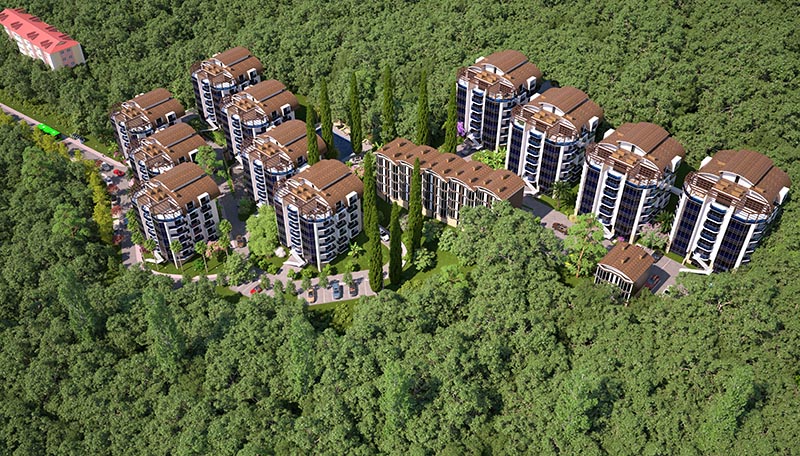
As we’ve mentioned several times, drones are clearly incredibly important to the effectiveness of aerial rendering. Without them, accurate aerial images would be prohibitively expensive. The technology in drones is rapidly upgrading so that accurate measurements, higher-resolution photos, and larger area scans are becoming much more viable.
They are becoming so common that even everyday lay users of drones can now create aerial videos and overlays with minimum prior experience. This allows them to take more information to a designer to create aerial renderings that are more accurate than ever.
To do the task properly, you must understand the flight plan and launch the drone in clear conditions to get the best visibility possible. You can create a flight plan on any number of apps or computer programs and then fly a routine route to capture your region’s topography – using large back-and-forth sweeps to capture every horizontal inch of the region.
Additional oblique sweeps may be necessary if there is a great deal of variable terrain. Either way, you can easily create a region diagram and send it off to design an aerial rendering.
Once you have an array of aerial footage from a drone, you can have Cad Crowd’s designers create some amazing diagrams. Flyovers can be augmented with terrain and elevation information, while photorealism can be incorporated to overlay other objects in the same space (for instance, a simulation of a car chase throughout the mapped terrain or something similar).
There is no end to what can be accomplished with this technology – as fly-throughs and flyovers are so commonplace that representing them with a rendering is a simple task for most designers now.
Perhaps the most important piece of the aerial rendering process is called composting. Designers must replicate much of the lighting and textures to manipulate the scene and incorporate everything necessary. This is the most complex piece of the puzzle, which is why aerial design takes such skill and experience to accomplish properly.
Designers will adjust the rendering for a simple object (for instance, a skyscraper) by changing the texture to reflect any moisture in the air, accounting for light sources, and adjusting for whatever atmospheric effects may be present in the scene to ensure a seamless visual interface. A great deal goes into this process, including perspective, shading, numerous camera angles, and so much more.
However, the end result is so stunning it’s worth every cent spent. A dynamic 3D aerial rendering is complex and time-consuming, so be prepared to wait for a truly complex masterpiece.
Ultimately, this is a worthwhile endeavor because of the potential business benefits of augmented reality – including efficiency, user interface, modeling of a business or terrain, and so much more. A high-quality aerial rendering essentially replicates your region on a computer for you to maneuver at your leisure.
3. CG Panoramas
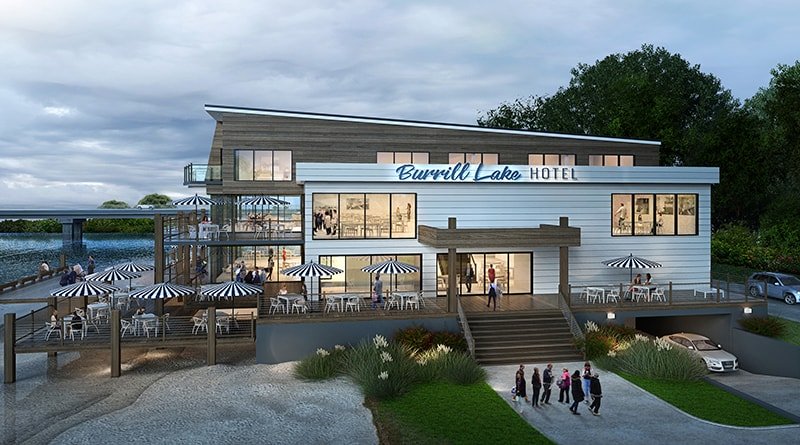
A CG panorama is a type of visualization that can be used internally and externally. This is one of the most common types of rendering you’ll see, particularly in real estate and marketing – because it is so visually appealing and gives such an elegant and detailed grasp of the space.
This is a simpler form of a walkthrough – almost a film made in the virtual reality space to show off the different spaces in a design, and it can make a huge impact on the appeal of a design for a client.
To create a CG panorama, the designer has to start with one of the other design forms. Your engineer or designer will create an exterior visualization or an interior render using the techniques explored here and then mold it into a format to use as a panorama.
By sweeping through the virtual space, the designer gives the illusion of motion and allows the client to see a comprehensive and quick view of the space at hand. This quick and almost overlooked design is a testament to the technology and effort behind the creation because panoramas can become so seamless and smooth while also showing stunning detail – to such a point of realism that it is overlooked.
Panoramas are used in numerous fields for different effects, but the most common ones are obviously going to be real estate and construction. You’ve probably all seen unique panoramas designed for various shows on HGTV. Whenever the designer begins discussing the new layout of the house they’re redoing, a panorama shot takes the viewer through the virtual house.
During this panorama, you have walls crumbling to show where an open concept will be created and furniture and fixtures dropping into place to explore the layout of the space. This visual overlay is a type of virtual reality CG panorama.
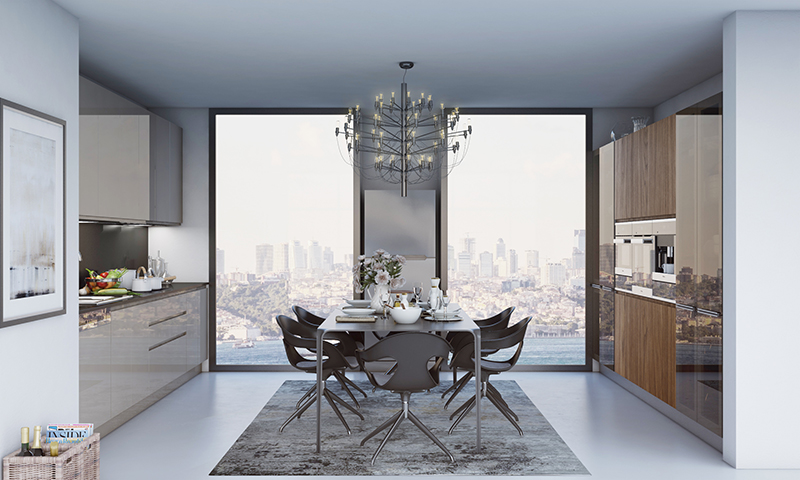
The camera will pan around a room or through different doorways in the form of a predesigned walkthrough to show you certain aspects of the overall creation. The additional features are added to show transitions and changes as the designers will update and develop the new house from their blank slate. The panorama allows for overlaying new design aspects on top of the current model and seeing it all in motion and in a unified state.
Beyond the real estate design aspect, architects will frequently use panoramas to show off a design or view of their plan. Sometimes it is very similar to the real estate designer because it will pan through images and rooms of designed structure so that you can get a feel for the different spaces and show what the finished product will look like.
Other times, however, a panorama can be created to show the “blue space” or the architectural bones of a building. You can create a 3D design of a building with only the line and stick drawings from a program like AutoCAD and use a panorama to visualize the construction elements of the design to see how it will stand structurally.
By doing this, they can assess a workspace’s structural layout, flow, and other features without worrying about the design or aesthetic features. They can preview the construction diagram to their architects or workers, so they have an idea of what the structure will look like, and they can preview necessary loads and other important structural information by simply analyzing the panorama of the interior structure itself. This gives a quick and visual check to see what everything is supposed to look like and how it fits together.
An exterior panorama is more useful and widespread in other industries. Returning to the aerial view 3D renderings we spoke about earlier, an exterior panorama can show the wide-field view of a region for a nature preservation society.
These can be used in presentations and marketing forums to display a region’s natural beauty for preservation and highlight important features. Essentially, this bird’s eye view becomes an interactive format to sweep through an area and show off the place in question.
Other industries can use it effectively, not only for marketing (for which it is quite capable – imagine giving a panorama of the wireless infrastructure throughout North America for Verizon Wireless) but for other functions.
Panoramas can help act as a rotating security or quality check – either to compare the real state against or, if you have the capability and speed, to incorporate real-time data into your panoramas. Many manufacturing and distribution companies are turning to CG panoramas to explore and explain the motion of their external fleet or warehouse operations.
In these situations, a panorama can show the whole sweep of a warehouse or distribution center and the motion or expected motion throughout. This can help reduce problem areas and wasted motion – a precious time and money-saving endeavor. With external fleets, a panorama can sweep through projected routes and line up the most effective route for vehicles to ensure efficient delivery.
As always, the gaming and entertainment industries are well ahead of the curve when it comes to CG displays and panoramas. These industries tend to drive advances made in others, as they can test and create new things with no real-world consequences, and they often stumble upon technology that is extremely useful elsewhere.
Video games will stitch together panoramas to display a region in a video game to show off the stunning graphics designed and give an overview before playing through a section. This can leave hints and clues to direct the player toward their goal.
In films and other entertainment, these are some of the most beautiful and epic shots created – such as the large-scale shot of every character in Marvel’s Avengers: Endgame that was recently released. These panoramas can make or break the artistry of this media.
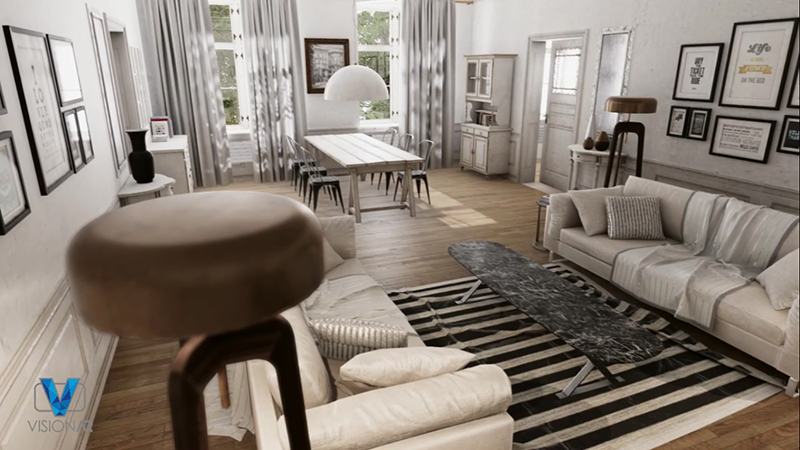
3D interior visualization is a process by which designers create photorealistic and accurate images or animations to display an intended design. Interior visualization includes the panoramas we discussed, walkthroughs, animations, and more.
Interior visualization is frequently used by media or real estate professionals to give a lifelike mockup of a design to create shockingly realistic views of a virtual design. If done well by a skilled professional, these designs can almost perfectly imitate a real-life photograph.
Interestingly, some of the best benefits of interior visualization and rendering have little to do with some of its more common users, like real estate professionals. Homeowners, retail stores, and businesses can actually reap some of the best rewards from this design process.
Individual homeowners have probably used an interior visualization tool without even realizing it. Home Depot has a paint color selection tool that works through an app on the phone, and it is essentially an interior visual overlay of the color of paint on your walls.
Additionally, it can be used to help estimate the size and orientation of furniture before purchasing it. When someone purchases a new house, they often have the opportunity to work with an interior designer to mock up how their furniture will fit in the space and what configurations they can try out.
Retail stores essentially provide the opposite service – they can use the designs of their products as the starting point and help you place them virtually in your space.
IKEA has been a big adopter of this process, offering services to view their vast array of furniture in different spaces and also giving options to change the specifications of pieces to better fit in your house. You can model different pieces in different colors and much more to see the best way to incorporate them into your home.
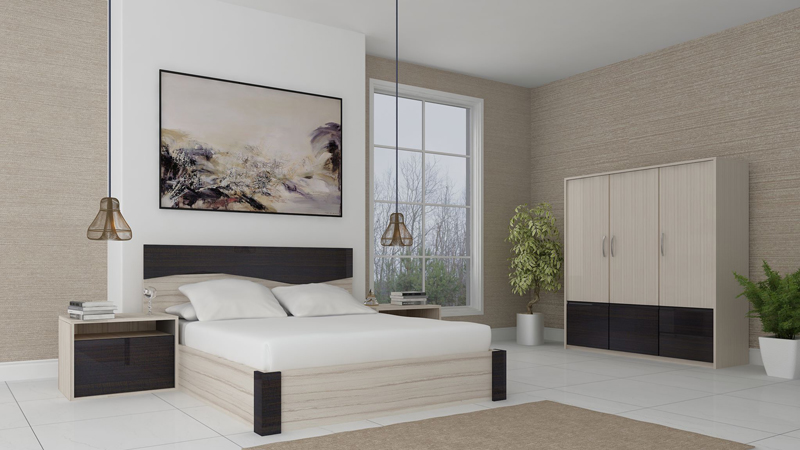
The process will save you a great deal of time and money. Not only will you save time and money by running through various options with the designer, but you can find other areas to increase savings. The time savings are probably the most obvious and are beneficial.
Instead of creating your space and testing different designs in person, you can see them instantly in the virtual space of your design. This will help when you go to build because you will have no obstacles in your way since the decisions will all be made. You’ll also save money by the simple virtue of not having to change or adjust anything.
Additionally, since these are detailed computer designs, the dimensions and geometric details can be ironed out well in advance, speeding up the process and giving the builders something to work with instead of a simple mental drawing or idea.
You can prevent any potential issues before construction by seeing everything laid out and knowing the problems and pitfalls you may encounter. You may notice that the couch you’ve selected will look fantastic in the space, but it’s two inches wider than the doorway. Seeing this in advance will prevent further issues and allow you to stay ahead of the game.
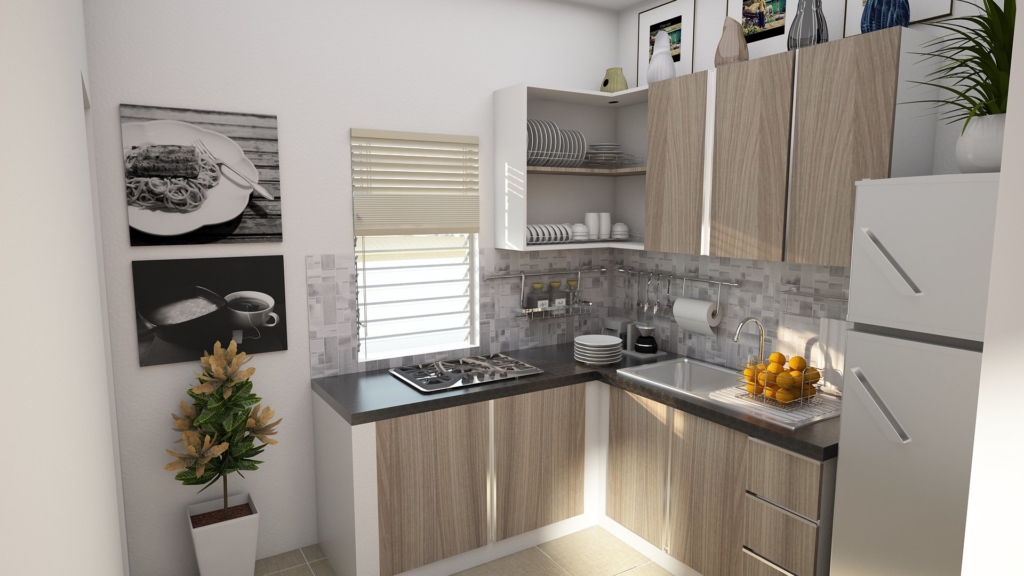
3D animation is related to the items we’ve discussed, but there is much more of a film or storybook detailing the important aspects of the design. With the capability shown in the other types of rendering, the ability to create a 3D animation should come as no surprise.
What differentiates a 3D animation from a panorama, walkthrough, or something similar? A 3D animation includes animated motion of some form. It seems obvious but can have significant benefits, particularly for complex designs. There are a couple of primary ways this can be helpful to create.
First, you may want to animate different aspects of the design phases. Any project that requires this sort of design is a massive undertaking, and animating portions of it can help show the overall vision or illustrate necessary actions.
For example, if you are creating a design to show an industrial manufacturing client the new machine to be constructed according to your specifications, they will likely want a detailed presentation of its operation. In many situations, this product doesn’t exist yet, so there is no footage to show how it will work properly, so you must create something to perform that action.
I’ll share an example from my own professional life for this. I was on the receiving end of a 3D animation at a previous employer – a fabric manufacturer. To improve quality, our company primarily used manual inspection – where an employee stood at a table watching every yard of the fabric pass in front of them, illuminated from the back, and they were tasked with identifying defects in the material in eight-hour shifts, all day every day. It was an exhausting and expensive process and resulted in numerous defects passing by without identification.
To mitigate this issue, the company decided to create an electronic vision system, outsourcing to a third-party company the design, construction, and programming of a bank of cameras that would inspect the fabric as it passed through the manufacturing machinery so that it could be inspected visually with a higher level of clarity and accuracy, while also increasing speed and throughput for the entire process.
Since this was an entirely new concept, the likes of which had never before been attempted, our company needed clarification of the idea before construction and need to be able to give our input on what would take place within the confines of the machinery and system.
To demonstrate this, a design was created using the in situ system and measurements of the space required. This mockup was a working, moving demonstration, all represented on the computer screen.
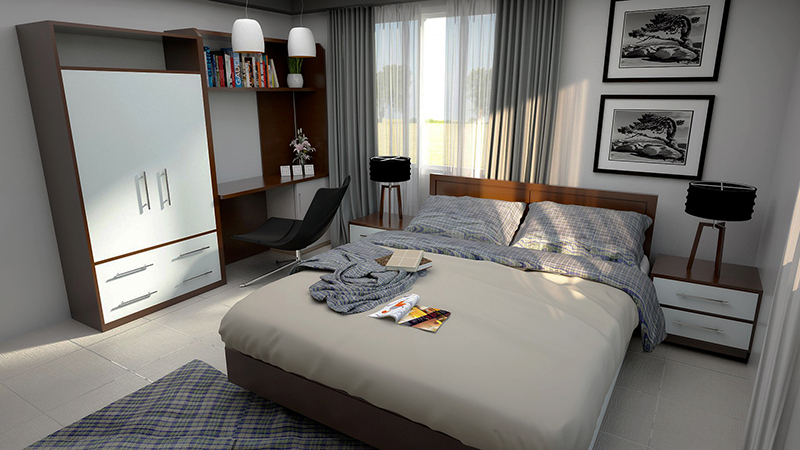
By animating the process, our company could see how the system would work and what would be needed to make it the most efficient possible. Not only did it allow us to see and visualize the design so that we could have input before it was created, but it also helped us to prepare our facilities to make installation as smooth as possible.
This made our lives significantly easier because we were prepared well in advance, knowing how much space would be needed and what changes or upgrades would be required to facilitate the new system.
We could also tweak the design of the vision system to ensure that it would meet our requirements and to take into account things in the process that we could not change. Animating it gave us a real-life, moving example so we could truly represent the process and ensure it would function properly, which would have been impossible without some form of 3D animation.
6. Virtual Walkthroughs and 3D Flythroughs
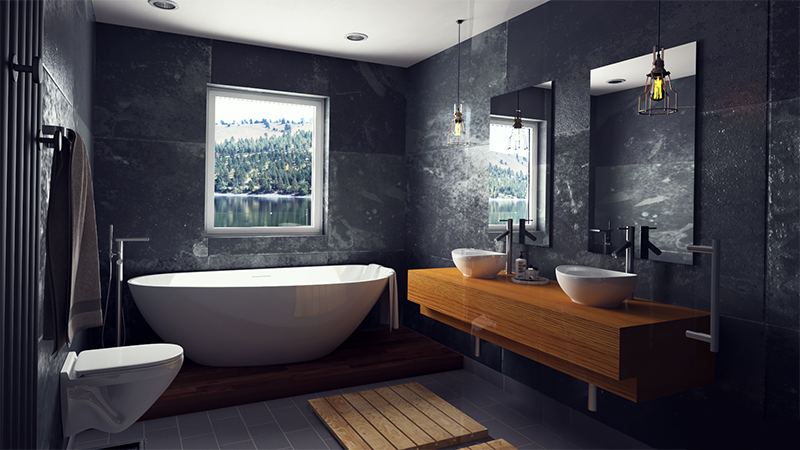
Specific to real estate and construction, virtual walkthroughs and 3D flythrough services have become irreplaceable to represent a house or building accurately. In many regions, the housing market is growing rapidly, meaning that dozens of new neighborhoods are undergoing construction at any given time.
Obviously, there are model homes that you can go and explore to see if you like the feel and layout of the house, but that’s not always practical. Some people may live too far away from the location to visit and see the model home reasonably, while others may want to see a different design version closer to their desires. This is where a virtual walkthrough and 3D flythrough can come in handy.
Combining the interior design with architectural CAD drawings, a rendering for a virtual walkthrough is the complete package for marketing. This type of design will illuminate the physical aspects of the space, such as the size of rooms, the height of ceilings, and yard dimensions, while also conveying the intended design features, like fixtures, paint colors, floor materials, and more.
What’s more, this rendering will also be traversable. A virtual walkthrough will allow the client to step through each room to see how the design flows seamlessly from space to space.
You can look at these designs like a guidebook, which shows each space in its panel, like a guest book that pans across different scenes, Or you can walk through them like a virtual tour, “walking” virtually through every room to see how the space is laid out.
There are additional benefits that may not be obvious to this design. Of course, you can see the space how it’s meant to be laid out and experience it in a realistic setting, but you can also use it to judge and guide spatial relationships.
For larger, newer designs, some moving and transportation companies use virtual walkthroughs to help find the most efficient movement of an object through space, particularly when squeezing through tight spaces such as a stairwell or doorway. This will prevent wasted motion and ensure each piece fits appropriately into the space provided. Nothing is worse than purchasing a piece of furniture that will fit great in your living room, only to realize it won’t fit through the door.
7. Architectural Site Plan Rendering
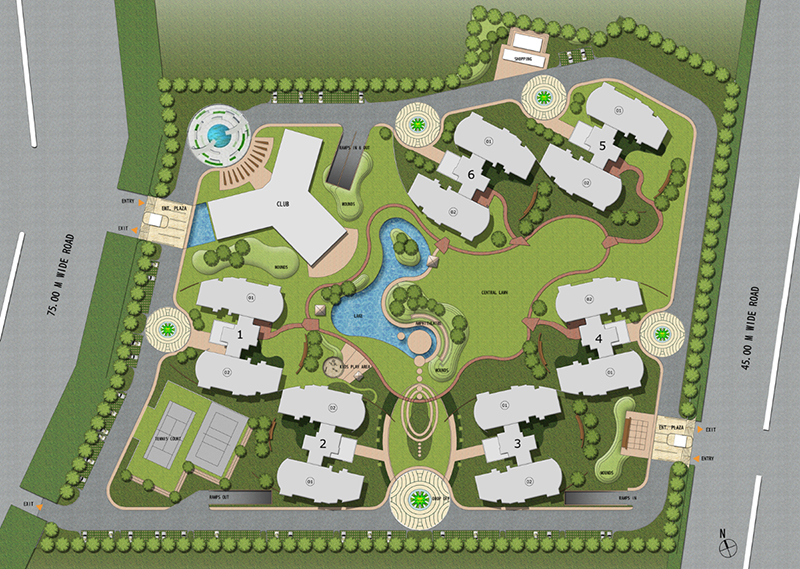
We’ve discussed exterior rendering, aerial rendering, interior design, and a lot of other stuff in the previous few sections of this article. Now, let’s take a look at architectural site plans. This one will likely look a bit rudimentary but will include some essential details that aren’t seen in the others. In fact, this is, in many ways, the opposite of what we’ve been discussing throughout most of the article.
Architectural site plan rendering can take a 3D model, image, or drawing of a building (or, oftentimes, a proposed one) and transform it into a 2D design. What is the purpose of this, you may ask? When completing a project, it is far easier for builders and engineers to work from a 2D view of a design or a cross-section. These designs are beneficial when constructing a building or showing an aerial shot of something.
If you compare this to the walkthrough we discussed in the previous section, you will notice that a 2D drawing, with the help of 2D drawings and floor plan design services, offers some comparable benefits as a walkthrough, with an eye for a bit more simplicity. You can create a “Spaghetti Diagram” from a 2D drawing to help show motion throughout a space.
These diagrams show paths and linear flow of objects through space to find problem areas or repetitive motion, and they are best done on a birds-eye view of a space. The obvious opportunity is with traffic flow and diagrams, since there is no need for 3D views of the motion since, as of right now, cars tend to stay on the ground as opposed to flying. A 3D design to model the flow and motion of cars may be pertinent in a few decades when flying cars really start to take off.
During the rendering project, there is much more than just a ball-and-stick drawing you see in blueprints or on an AutoCAD screen. CAD designers can add shape, texture, color, dimension, shadow, and specific details to make the design visually appealing and more accurate. In fact, despite their compressed nature, these designs can be just as photorealistic as the 3D ones and can show off quite a bit of detail, particularly in large-scale, high-resolution projects.
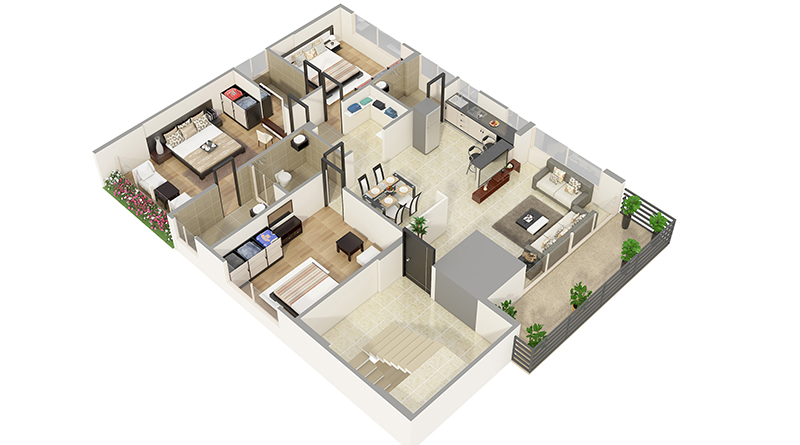
With some creativity, designers have started giving a new concept a spin – cross-sections and never before seen visuals. With 3D printers, enthusiasts have observed their creations in every manufacturing stage and have even watched as detailed, intricate pieces come together, which had never been viewed except the exterior.
This inspired an entirely new type of design, or at least gave it more momentum – a 2D cross-section or interior view. Designers are now creating detailed schematics of their product’s interior design complexity. This applies to numerous fields – including the medical and technology fields.
The detail and complexity that can be included with one of these renderings are staggering – as we mentioned earlier, the granular details have improved rapidly to allow for higher visibility and greater scalability when peering through the different views of a design. Architectural site plan rendering, and 3D floor plan design services, give you more visual information on the most important details so that you can make drastic changes and improve the design and the world.
Software and Capabilities for Rendering
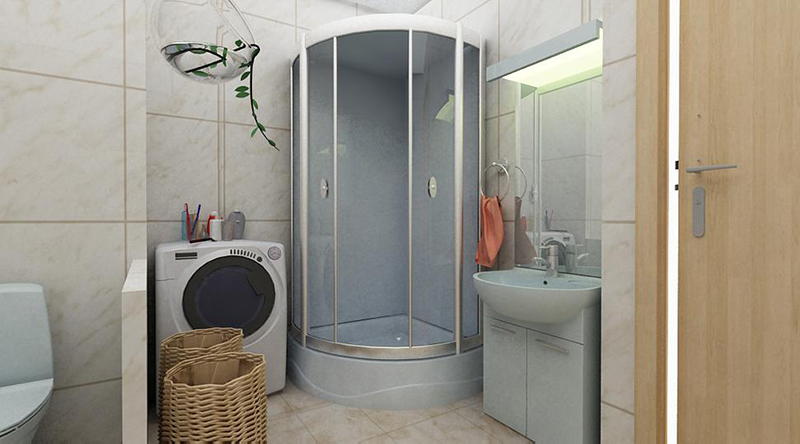
That was a lengthy exploration of the different things you can do with 3D rendering, starting with architectural rendering and 3D real estate rendering. The software in play here is used throughout various industries, so we’ll take a quick look at a few different types of programs used for these effects and illuminate their positive and negative attributes to help you decide what’s best for you.
AutoDesk Suite
AutoDesk is one of the most versatile services because they, like Microsoft, have an entire suite of programs available that are relatively compatible with one another and make transitioning fairly simple. AutoCAD is one of the best programs for doing simple 2D structural drawings, but programs like AutoDesk Revit and Maya can upgrade those functions to create dynamic 3D landscape renderings and other 3D renderings.
AutoDesk Revit may be the most popular choice among architects and developers. Revit makes incorporating data and dimensions into the design easy to create real-to-scale designs that correctly display size and scale throughout the work.
In addition, it also comes with information modeling features that allow you to test and simulate different physical characteristics in the design to make life much easier. If you want something more powerful, Maya is the upgraded version, one of the most dynamic products on the market today. It has been used in numerous CGI films and television shows. Maya is uniquely capable of incorporating realism into design and animation and can help create extremely lifelike renderings.
SketchUp
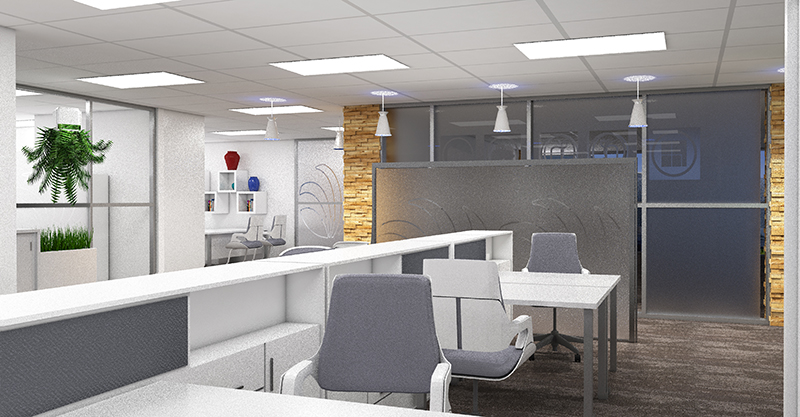
Google’s free software (which has additional upgrades for added effect) is one of the most user-friendly products available. With numerous predesigned packages to easily implement into the design and straightforward design features to start you out walking before you have to really learn how to run, SketchUp makes the first iterations of your design very straightforward.
With the help of an experienced 3D architectural visualization service, you can build upon these foundations, and SketchUp has more than enough capability to improve to more realistic designs. The major benefits of SketchUp are the cost and the ease of use. It allows you to create your simplified version, even if you have little to no experience with architectural rendering, and bring it to a better designer who can turn it into a true masterpiece.
With this program, you can get your ideas on paper and make a start so that you have something upon which to build. The pre-programmed functions and designs can be a time saver when you’re starting, so you can create quick designs and shape them however you want to show them to a designer.
Chief Architect
Chief Architect may be the perfect intermediate blend of other programs. It is not as robust as Maya modeling services, which are much more user-friendly. Chief Architect has much of the ease of access available with a program like SketchUp mixed with the power of Revit or Maya.
This is a prevalent choice for the “DIY” builder or designer. Someone with little experience can sit down with this program and begin making designs almost immediately, and can even transition them into true 3D renderings without any experience.
An incredibly intuitive program, it will recognize 2D objects and extrude or rotate them as desired, giving you instant options and access to 3D designs. The user needs only to know how to begin the initial architectural designs with simple lines and dimensions, and the program will help carry them to the next steps to create a powerful, lifelike 3D image.
The program has numerous pre-programmed materials, shading options, and colors so the designer can instantly select from a few popular styles and see a quick view of their finished design. It also can automatically populate framing plans, site schematics, and construction documents on the fly, making an architect’s life much simpler.
ArchiCAD
ArchiCAD was made by architects for ArchiCAD freelancers, which is useful for a reason. This is one of the most intuitive programs, and it was designed with architecture in mind. Because of this, ArchiCAD is created with information modeling and CAD AI built-in.
These aspects help manage and streamline the designs so that they are interchangeable and efficient and will allow it to remember selections and tendencies, making it more powerful with every design you create. ArchiCAD design services are the architect’s virtual assistant, in essence.
This program thinks ahead and gives quick options for the next steps in the design process, which improves as it learns your standard process. It has compelling photorealism capabilities, creating some of the most lifelike products on the market. This extremely robust program is designed to be fast and capable – preloading options for the next design step in advance so that at each stage, you don’t have to wait and can create renderings in real time instead of waiting for each stitch to load properly.
Additionally, since it instinctively knows the construction documents needed for each type of design, it can prepopulate different forms or documents as soon as your project is complete.
Vectorworks Architect
If ArchiCAD was the robust, rule-following program, Vectorworks is an adaptable, boundless program. It is not as robust as ArchiCAD or Maya but essentially limitless. Vectorworks is infinitely adaptable, allowing you to create unimaginable things in real life or in these other programs.
The Parasolid 3D engine in this program is more powerful than any of the others and allows for extremely complex geometric shapes. This allows you to create incredibly complex 3D designs that are somewhat baffling in shape and size.
However, to buck the traditions of modern design, something like this is sometimes necessary. The crazier the design, the more groundbreaking it can be. In this case, it can take a baffling design and model all the surfaces, shading, and angles of view so you can take some bizarre polygon and create a building one hundred stories tall that look as lifelike as any modern skyscraper in New York City does today. Who knows, maybe your next crazy Vectorworks design will be one of those skyscrapers in a few years.
Benefits of 3D Rendering Services
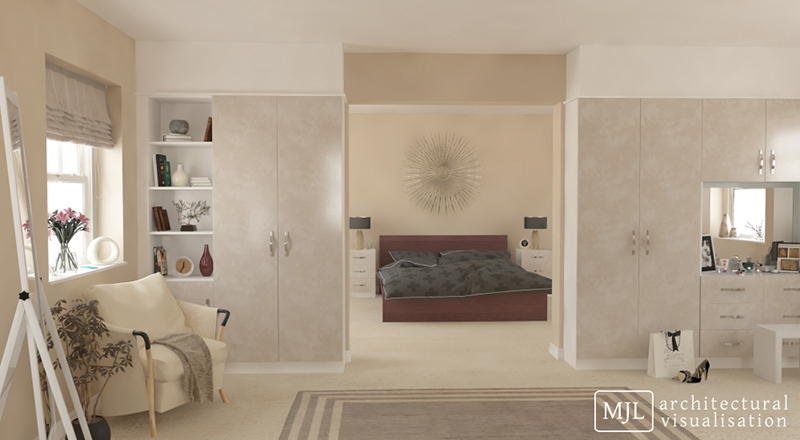
3D rendering is highly complex, and 3D rendering programs can do various things. Today, functionality such as that offered by these programs and 3D architectural rendering services are necessary to compete in the modern business world.
There are numerous possibilities for how you go about creating designs, and there are many different programs to accomplish these tasks. The list we just created is far from exhaustive. In fact, a quick search on Cad Crowd’s offerings shows several dozen, without even getting into specific other options that may be desired.
As we’ve discussed, an excellent architectural design service usually incorporates some form of these 3D renderings. You have the benefit of showing a virtual reconstruction of a project-to-be to potential clients that can take them soaring or walking through the schematics without stepping out of your office.
With real estate alone, the possibilities are endless. Showing off a proposed community is easier than ever because you can display how it will interact with the surrounding city and landscape while considering traffic flow and municipal guidelines. You can take a prospective client on a virtual walkthrough, and if they’re dissatisfied with any aspect of the design, you can change it on the fly.
The malleability of these designs is one of their most remarkable features. Any time a client wants something different in the design, it is only a few clicks of a button to completely transform the project to take that into consideration. Your part has no added expense or time because the virtual space allows it to be reconstructed and adapted quickly and easily.
Make Your 3D Rendering Project a Reality
You don’t have to be a guru to use this technology. While it can change your company completely, we recognize that it’s complex and challenging to learn. Find a qualified designer to help you learn it or create a rendering. You can take advantage of the benefits of this technology for your industry today and get ahead of the curve.
With a vast database of nearly 25 thousand pre-vetted and experienced freelance professionals, Cad Crowd offers every type of design and rendering imaginable, far beyond the seven we explored in this article. The benefits are apparent, so don’t hesitate to give it a try for your next project!
Learn how it works and request a free quote so that you can get started right away.
